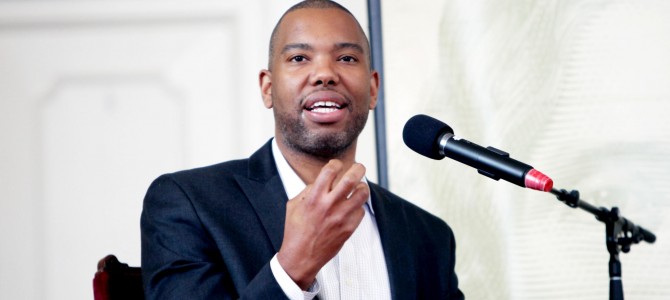
Trying to understand President Donald Trump is a difficult task. Is he a pathological narcissist, both psychologically and intellectually unfit for office? Is he an international con artist, masterfully evading every penny of due taxes while simultaneously covering up naughty collusions with neo-czarist regimes? Is he a school yard bully in a septuagenarian’s body? A connoisseur of petty insults and epithets? An illiterate buffoon? A sexist? A racist? A homophobe?!
To the Left, Donald Trump is all these things—just not all at the same time. When he fired FBI Director James Comey, Trump was flagrantly concealing his Russia ties. When he suggested the Charlottesville counterprotesters included some “bad dudes,” he was ever so subtly dog-whistling his fellow Klansmen. He is either a bumbling fool, or a cunning villain. He is either a godless sinner or a hillbilly Christian fundamentalist. Each mainstream media headline Trump stars in includes the most situationally appropriate negative label. To common folk, the enigma that is Trump is made even more opaque when such contradictory explanations are presented.
If only the Left could agree on Trump’s quintessential essence. What is the common denominator that informs all his vile actions? What makes him tick? What is the most fundamental aspect that puts the Trump in Trump?
Ta-Nehisi Coates On Trump and His Country
In an Atlantic article published on September 7, we finally received the answer: Trump is white. No, not orange or beige. Not even slightly eggshell. Trump is nauseatingly pure white. He is so white that, contrary to popular belief, Trump is “the first white president.”
This surprising revelation is laid bare in an extract from Ta-Nehisi Coates’ coming book, “We Were Eight Years in Power.” As in many of Coates’ pieces, this essay gives us a haunting glimpse into the racial underpinnings of America’s history. From our nation’s colonial days to Civil War, from the Jim Crow era to the election of the 45th president, Coates paints a portrait of America overwhelmingly animated by the ideology of white supremacy. In Coates’ work, white nationalism, white power, and white privilege all coalesce into the “bloody heirloom” that Trump brazenly used to propel himself into the Oval Office.
In a stunning work of narrative alchemy, Coates takes a sample of Trump’s controversial quotes and political directives and transforms them into beaming pearls of white supremacy. Trump’s (admittedly laughable) birtherism had not an inkling to do with Barak Obama’s globetrotting childhood, but rather was “a recasting of the old American precept that black people are not fit to be citizens of the country they built.” When Trump (inelegantly) proposed that illegal immigration included elements of criminality, he was actually posturing as “the defender of white maidenhood against Mexican rapists.”
Coates seems to suggest that any Trumpian gaffe is no more than a veiled racist invective. When Covfefe is finally de-coded, we will likely find that, in fact, it was the first chapter of “Mein Kampf” tightly compressed into seven characters.
Obama’s Legacy, In The Eyes Of Ta-Nehisi Coates
To be fair, Coates runs other politicians through his nifty implicit racism x-ray machine. He suggests that Bill Clinton’s “tough on crime” legacy was an excuse to incarcerate the black youth population. Neither does he forget to reference Hillary’s “Super Predator” speech. Presidential throwbacks the likes of Richard Nixon and Franklin D. Roosevelt are all implicated for their part in white identity politics.
Trump’s bigotry, however, is different from past racist executives because of one vital factor: he was elected after Barack Obama. Trump is the first white president because Trump is the first post-black president.
Coates endorses a claim made by historian Nell Irvin Painter that “race is an idea, not a fact,” and goes on to extrapolate that “essential to the construct of a white race is the idea of not being a n—–.” To exist, whiteness requires the prerequisite of blackness. To be white is inherently nothing but the act of not being black, a bleak interpretation of a violently whirling Yin and Yang.
That race is a construct not so much rooted in biology as informed by culture is by no means a ridiculous claim. There are very good reasons to support this understanding of race. However, what Coates goes on to deduce with this logic is rather sinister. In more colorful language than my own, Coates proceeds to reclassify the building blocks of Obama’s legacy as being themselves black: black health-care reform, black climate accords, and black justice reform. The Iran nuclear agreement was black. Obergefell vs. Hodges was also black, as was the Trans-Pacific Partnership and Deferred Action for Childhood Arrivals (DACA).
So when and if Trump modifies, erases, or replaces any Obama endeavors, he is essentially warring against blackness. Coates sets up a scenario in which any opposition to an Obama policy is sheer racism.
Is The Left About Class Struggle, Or Identity Politics?
This is what Coates most masterfully does with his article. He recounts real historical examples of appalling racial inequality, and then he myopically examines policies and statements through the lens of race theory, finally concluding that any right-of-center policy is racist.
Intersectionality is rampant throughout Coates’ piece. Feminism, LGBT activism, and Islam all get a friendly wink. However, race reigns supreme throughout. The majority of his article has nothing to do with Trump, per se. Instead, much of the writing serves as a defense of identity politics, with Coates lambasting fellow leftists for reverting to class struggle at the expense of a race struggle narrative.
The fall of the blue wall in the Rust Belt, resulting in an electoral loss for Hillary, has been examined in several ways. Was it the result of the Democratic Party silencing its labor rhetoric to make room for a mixed bag of racial, gender, and sexual identitarian politics? Many on the left have flirted with, if not affirmed, this interpretation. But not Coates. His article indicts leftist heroes Joe Biden, Bernie Sanders, and Nicholas Christof as trying to de-villainize white working Americans.
In Coates’ own words, we must grapple with the fact that “systemic bigotry is still central to our politics; that the country is susceptible to such bigotry; that the salt-of-the-earth Americans whom we lionize in our culture and politics are not so different from those same Americans who grin back at us in lynching photos…”
Anti-capitalism runs under the surface of his essay, but Coates believes the only valid Marxist approach is racial identity politics. The “Bloody Heirloom” of systemic racism must be identified, rooted out, and brought to justice wherever it can be found. And Coates knows how to find this “heirloom” around every corner and under every rock in the United States.
Coates Emphasizes Racial Struggle With Little Nuance
Ta-Nehisi Coates cannot be discredited as unlearned in his field of interest. Nor can he be dismissed as a poor writer. His readers are confronted with characters and events pertaining to the African American struggle that have been forgotten by the collective American consciousness. He introduces us to many more Emmet Tills, and recounts to us a dozen other Dred Scott court cases. Coates’ true folly comes not from his knowledge of history, but rather from his dogmatic belief of its driving force. To Coates, culture and politics are inextricable from race. Race struggle is the moon that pulls the tides of history.
Coates lives in a world primarily driven by race. And for the next four to eight years, the leader of his (not-so-free) world is Donald Trump. So those who voted Republican in 2016 were Klansmen, the President is their Grand Dragon Wizard, and every Trump-Pence 2020 yard sign will be a burning cross.
While others on the Left continue to diagnose Trump’s pathology inconsistently, at least we will all ways have the same answer from Ta-Nehisi Coates: “Trump is White.”








